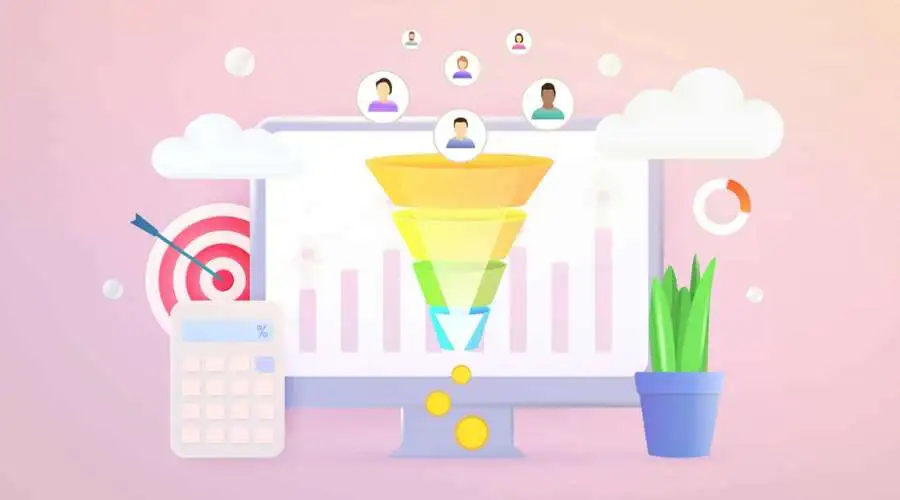In today’s crowded digital marketplace, it is crucial for businesses to have a clear understanding of their target audience. This is where the concept of an Ideal Customer Profile (ICP) comes into play. An ICP is a detailed representation of your target customer, including demographics, behaviour patterns, pain points, and goals. In this blog post, we will explore the importance of having an ICP and how it can benefit various aspects of your business.
What is an Ideal Customer Profile and why is it important?
Having a well-defined ICP can help your business in several ways, including:
- Better targeting and lead generation: An ICP allows you to focus your marketing efforts on the people most likely to become customers, reducing the amount of time and resources spent on ineffective tactics.
- Improved product development: Understanding your target customer’s needs, pain points, and goals helps guide product development and ensure that your offerings meet the needs of your target market.
- Better sales prospecting and increased sales: When sales teams have a clear understanding of their ideal customer, they can tailor their pitch to address their specific pain points and close more deals.
- Improved customer retention: An ICP can also help you understand what motivates your customers to stay with you, allowing you to focus on delivering the best possible customer experience.
Creating your Ideal Customer Profile
The process of creating an ICP involves collecting data and creating a detailed portrait of your ideal customer.
Start by considering the following:
- Demographics: Who are your customers in terms of age, gender, income, and location?
- Firmographics: Who are your target companies in terms of industry, size, revenue, etc?
- Pain points: What problems do your customers face that your product or service can solve?
- Goals and buying processes: What motivates your customers to take action and make a purchase?
- Behaviours and preferred channels: What websites do they visit, what social media platforms do they use, and what kind of content do they consume?
Once you have this information, you can use it to create a comprehensive picture of your ideal customer. This portrait can then be used to guide all aspects of your business, from marketing and sales to product development and customer service.
Example of an Ideal Customer Profile
Company: XYZ Software
Industry: B2B Software
Demographic information:
- Company Size: Medium enterprises with 100-500 employees
- Location: Australia
- Decision Maker: CTO, CIO, IT Manager
Firmographic information:
- Industry: Technology, finance, healthcare
- Revenue: $5-50 million
- Company Structure: Hierarchical
- Technologies: Salesforce or HubSpot CRM
- Web traffic: 10k+ per month
Customer pain points and challenges:
- Difficulty in managing complex IT systems and infrastructure
- Need for a secure and scalable software solution to meet growing business needs
- Inefficient and time-consuming processes for managing and analysing data
Goals and decision-making processes:
- Research-driven, seeking solutions through online resources and peer recommendations
- Prioritize security and scalability in their software solutions
- Evaluate potential solutions through demos and pilot programs
Preferred channels for communication and marketing:
- Online search and targeted ads
- Industry events and conferences
- Referral marketing and word of mouth
By creating this Ideal Customer Profile, XYZ Software now has a clear understanding of the target audience they aim to serve, enabling them to tailor their marketing and sales efforts to meet the specific needs and challenges of their ideal customers. This leads to more effective lead generation, increased conversion rates, and improved customer satisfaction.
If you’re new to building out ICPs and looking for a basic worksheet to get you started, you can download HubSpot’s Ideal Customer Profile (ICP) Ebook and Worksheet.
Firmographics: A vital piece of the ICP puzzle
In addition to considering individual customer demographics, behaviours, pain points, and goals, it’s also important to take a closer look at the organisations that make up your target market. This is where firmographics come into play.
Firmographics refer to the characteristics of organisations, including size, industry, location, and revenue. Understanding these characteristics can provide valuable insights into the needs and challenges of your target market, and help you build a more complete and accurate ICP.
For example, if you sell enterprise-level software solutions, you might want to focus your efforts on larger organisations with a high revenue. On the other hand, if you sell a product aimed at small business owners, you’ll want to focus on smaller organisations with fewer employees.
Incorporating firmographics into your ICP can also help you tailor your messaging and marketing efforts to better resonate with your target market. For example, you may use different messaging and approaches for selling to a Fortune 500 company versus a local mom-and-pop shop.
Learn more about what is firmographic data.
The rise of ‘next gen’ firmographics and technographics
What we’re seeing more of is that it’s not enough to only characterise target companies by this base level of firmographic data – or what we call ‘foundational’ data. It’s also helpful to look at other ‘next gen’ data like technographics – what technologies are they using? For example, if you find you’re winning most of your deals to customers who are already using another core piece of technology, like a CRM such as Salesforce or HubSpot, you can add that to your ICP and target more customers that fit that profile.
Other ‘next gen’ firmographics includes things like web traffic, social followers, and reviews. For example, if you’re a B2B software company selling to ecommerce businesses, you may find the higher the social follower count and higher the website traffic they have, the larger the database they have – which could be a key proxy for those with a higher propensity to buy your product.
What if I don’t have much data on my customers yet?
Start by reviewing your current customer data set, whether that lives in a CRM or other place. If you’re a B2B company and only have limited information about the companies you’ve sold to, look at leveraging a database platform like Firmable’s B2B database for Australia to enrich your existing customer data and build out a more complete ICP. You can also run customer surveys to find out more about them and how they like to buy. From there, seek out additional prospective customers that match your ideal customer profile and begin prospecting to them to win more business.
Conclusion
Having a clear understanding of your ideal customer is essential for any business looking to succeed in today’s digital marketplace. By creating an Ideal Customer Profile, you can better target your marketing efforts, improve product development, increase sales, and improve customer retention. And by taking a closer look at the organisations that make up your target market and what firmographic data attributes they have, you can gain valuable insights and make informed decisions that will help you reach your target customers that fit your ICP more effectively.




